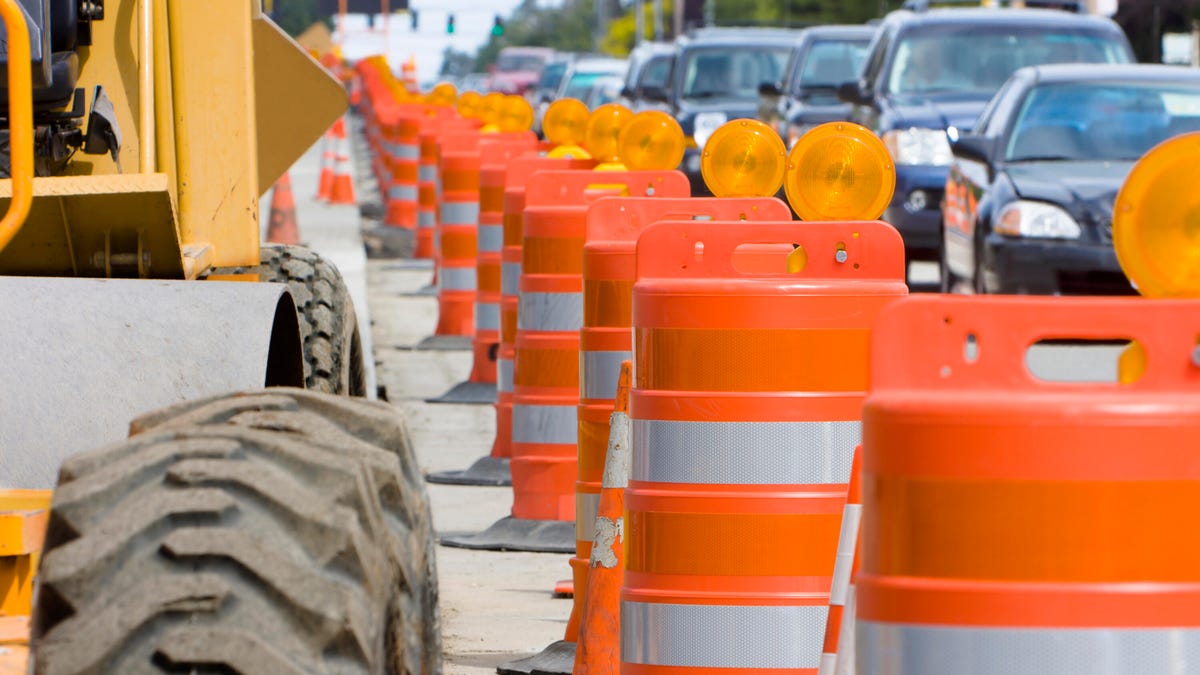America's infrastructure has gotten a little better since 2017, but is still mostly really bad
The American Society of Civil Engineers released its latest US infrastructure report card. We earned a C-.

The nation gets a C-, but our roads get a D.
Every four years, the American Society of Civil Engineers meets to dish the US a very important report card -- a final grade for the country's all-important infrastructure. The last report card in 2017 presented a D+ for the country, but in 2021, the country actually made small, but modest, gains to earn a C-. It's the first time in 20 years the US has managed to score a passing grade.
The final letter grade from the ASCE, issued Wednesday, reflects state and local authorities beginning to actually invest much-needed funds in a wide range of infrastructure. The ASCE doesn't merely look at US roads, for example. It also grades aviation, bridges, energy, drinking water, transit systems and other categories. In some cases, the country's done pretty well; for example, the nation's port earned a B-. In other cases, such as transit systems, we're seriously lagging behind, with a D- grade. And to put the letter grades into perspective, a B essentially means things are good and adequate, while a C flashes warning signs that something needs attention. A D grade is poor and denotes serious risks of failure and other negatives.
Speaking of D grades, US roads earned one based on the awful state the nation's highways and local roads are in. The ASCE estimates that 40% of US roads are in poor condition now, and that literally costs drivers money. In their current state, road conditions lead to $1,000 in lost time and fuel annually, the group estimated. Although there are numerous areas the US needs to focus on, roads are a big sore spot in dire need of attention, according to the report card.
"Federal, state and local governments will need to prioritize strategic investments dedicated to improving and preserving roadway conditions that increase public safety on the system we have in place, as well as plan for the roadways of the future, which will need to account for connected and autonomous vehicles," the ASCE wrote.
Here's each area the ASCE graded. We have work to do.
While the ASCE applauded some of the modest gains the US has made, it still laid out a pretty spendy picture of what it will take to put the US back in the driver's seat, warning of job losses and future economic activity affected by decaying infrastructure. In 2021, the US would need to increase its current spending by $2.59 trillion to push every single sector the ASCE grades up to a solid B. And there are a lot of Ds on this report card, folks. In the next 10 years, the US would need to provide nearly $6 trillion total in spending to future-proof the nation's infrastructure. Right now, we're only on track to spend $3.35 trillion.
The ASCE provided recommendations for how the US should meet that goal with committed spending and called upon elected leaders and private groups to practice asset management. It also emphasized that future projects require a different kind of thinking -- a long-term thought process, which it called "triple bottom line." Instead of just the here and now, a cost analysis needs to span a project's entire life. Perhaps something may be more expensive in the present, but would end up being a more economical choice in 10 years, for example.
We'll likely get a taste of what the US is ready to tackle under the Biden administration, which promised bold action on infrastructure to modernize the country and create jobs to rebuild from the coronavirus pandemic.

